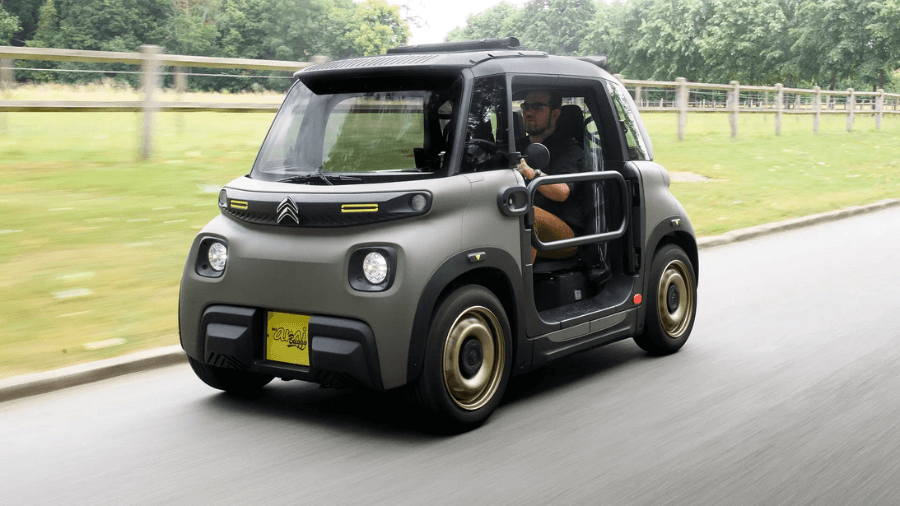📑Table of Contents:
Electric vehicles (EVs) are revolutionizing the auto industry. They offer sustainability, efficiency, and cutting-edge technology. However, not all EVs win in the looks department. Some electric cars have designs that are so unique that they spark debates. Are these designs bold statements, engineering necessities, or just plain missteps?
In this article, we’ll dive into why some electric cars look unconventional, explore the most criticized designs, and understand how appearance affects the EV market. Let’s find out if ugly electric cars deserve a second glance.

Why Do Some Electric Cars Look “Ugly”?
Designing an electric car isn’t just about aesthetics. Engineers face unique challenges that impact how these vehicles look. Here are the key reasons:
- Aerodynamics Over Style: EVs need to maximize efficiency. Streamlined shapes reduce drag and improve range. Sometimes, these priorities overshadow visual appeal.
- Battery Placement: Batteries are heavy and large, so designers must place them strategically, often resulting in odd proportions or bulky exteriors.
- Innovation Focus: Many automakers aim to stand out by creating futuristic or daring designs. However, bold doesn’t always mean beautiful.
- Cost Constraints: Budget-friendly EVs often sacrifice sleek designs to keep prices low. Practicality takes precedence over polish.
Notable Examples of Ugly Electric Cars
Here’s a list of EVs that have sparked mixed reactions due to their unconventional looks. While some people embrace their uniqueness, others aren’t so kind.
1. Nissan Leaf
The Nissan Leaf is a pioneer in the EV market, but its design leaves much to be desired. The bulbous front, oversized headlights, and awkward proportions make it a frequent topic in design critiques. Yet, its affordability and functionality keep it popular among buyers.
2. BMW i3
BMW’s i3 took a radical approach to EV design. Its compact size, squared-off back, and quirky color combinations turn heads—but not always in a good way. Despite its divisive appearance, the i3 wins points for sustainability and performance.
3. Toyota Prius Prime
The Prius Prime combines hybrid and EV capabilities, but its exterior often draws criticism. With sharp angles and a protruding rear, the design looks more experimental than elegant.
4. Fiat 500e
The Fiat 500e embraces a retro aesthetic, but its rounded, almost cartoonish shape doesn’t appeal to everyone. It’s often called “cute” rather than stylish, leaving some buyers unimpressed.
5. Tesla Cybertruck
Love it or hate it, the Tesla Cybertruck is the ultimate conversation starter. Its angular, sci-fi-inspired design breaks every rule in automotive styling. While it boasts incredible functionality, its looks are polarizing.
The Logic Behind “Ugly” Designs

Odd-looking electric cars may not win beauty contests, but there’s often a method to the madness. Let’s break down the logic:
- Maximizing Efficiency: Ugly designs often prioritize aerodynamics. For example, the Nissan Leaf’s streamlined shape enhances range by minimizing wind resistance.
- Standing Out in a Crowded Market: As EVs become mainstream, automakers use unique designs to grab attention. Tesla’s Cybertruck is a prime example—it’s impossible to ignore.
- Highlighting Sustainability: Designs like the BMW i3 emphasize their eco-friendly materials and innovation. The unusual look serves as a visual cue for their green credentials.
- Adapting to New Technologies: EVs don’t require traditional grilles or engines. This freedom lets designers experiment with unconventional aesthetics.
Do Ugly Electric Cars Impact Sales?
Appearance can influence purchasing decisions, but it’s not the only factor. Buyers consider other aspects like price, range, and functionality. Here’s how design plays a role:
- For Style-Conscious Buyers: These customers prioritize aesthetics. An unattractive design might deter them, even if the EV performs well.
- For Practical Buyers: Many EV buyers focus on efficiency and sustainability, overlooking odd designs if the car meets their needs.
- For Early Adopters: Tech enthusiasts often embrace quirky designs. They value innovation and uniqueness and view unconventional aesthetics as a bonus.
Interestingly, some “ugly” EVs have thrived despite criticism. The Nissan Leaf, for example, is one of the best-selling EVs globally. This success proves that performance and affordability often outweigh appearance.
The Future of EV Design
As the EV market grows, automakers are refining their designs. Trends show a shift toward more balanced aesthetics. Here’s what the future holds:
- Blending Function and Form: Companies are finding ways to improve aerodynamics without compromising style. Sleek yet efficient designs are becoming the norm.
- Customization Options: Some brands offer customizable exteriors, letting buyers personalize their cars. This trend helps cater to diverse tastes.
- Collaborations with Designers: Automakers are partnering with top designers to create visually appealing EVs. These collaborations aim to make sustainability stylish.
- Inspiration from Concept Cars: Many concept EVs boast futuristic yet elegant designs. As technology advances, these concepts could shape production models.
Why Ugly Electric Cars Deserve Respect
Despite their polarizing looks, ugly electric cars are vital in advancing the industry. They prioritize function, sustainability, and innovation. These vehicles pave the way for better designs by challenging conventions and inspiring future improvements.
Ugly EVs also make sustainability accessible. Focusing on affordability and efficiency ensures more people can join the electric revolution. Their impact goes beyond appearances, proving that beauty isn’t everything.

Closing Words!
Ugly electric cars spark debates but are essential to the EV landscape. Their unconventional designs highlight the challenges and creativity involved in making sustainable vehicles. Whether you admire their boldness or cringe at their looks, these cars push boundaries and fuel innovation.
As automakers refine their designs, we’ll see a blend of aesthetics and functionality. Until then, ugly electric cars will continue to turn heads—and keep the conversation going. Whether you’re a fan or a critic, one thing is clear: these vehicles are shaping the future of transportation.





